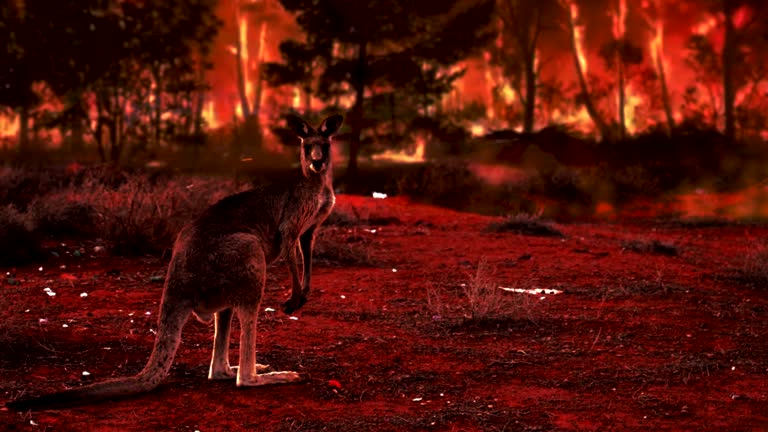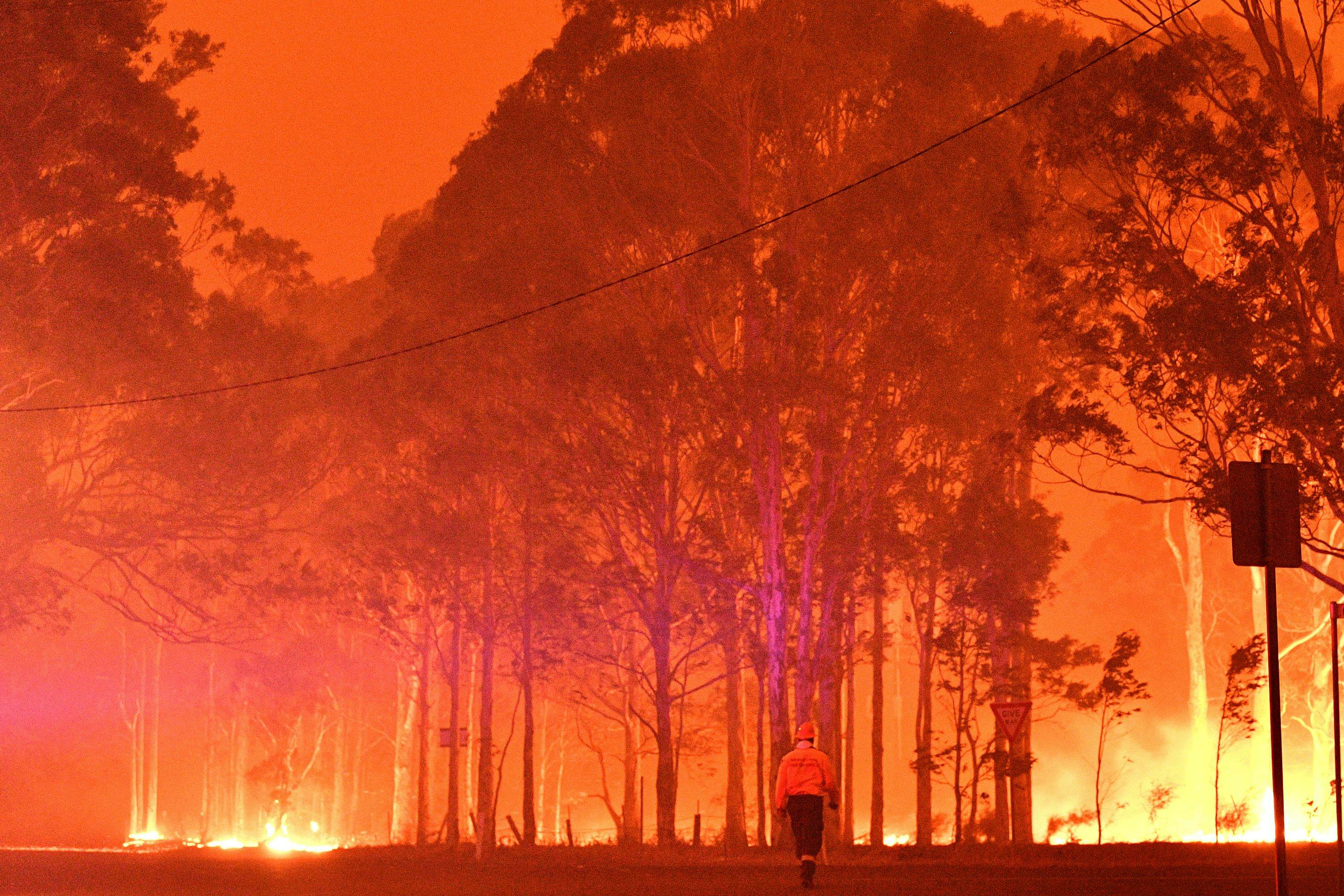Expert Advice on Bushfire Monitoring for Boosted Fire Security
In the realm of bushfire administration, the relevance of professional recommendations can not be overstated. With the raising frequency and extent of wildfires, it is important to look for advice from those skilled in the intricacies of fire actions and mitigation approaches. From comprehending the subtleties of bushfire habits to implementing sensible steps such as firebreaks and defensible rooms, there exists a riches of knowledge that can dramatically improve fire security initiatives. The vital exists not only in the individual elements of fire monitoring however likewise in their cohesive assimilation into a comprehensive strategy. By diving into the knowledge offered in the following conversation, a more clear course towards strengthened fire defense can be illuminated.
Understanding Bushfire Habits
To properly take care of and mitigate the impact of bushfires, it is crucial to have a detailed understanding of bushfire behavior. Bushfires are complicated natural phenomena affected by different variables such as weather, topography, fuel load, and human tasks. Understanding how these aspects communicate is essential in anticipating the habits of a bushfire, permitting far better preparation and feedback strategies.
One key aspect of bushfire actions is fire spread. By researching past fire incidents and assessing fire patterns, professionals can anticipate just how a bushfire might progress under certain problems.
Furthermore, comprehending ember assault, finding, and fire tries is essential in grasping the complete degree of bushfire habits. Ashes can take a trip fars away in advance of the fire front, firing up area fires and posturing a considerable danger to properties. Fire whirls, on the various other hand, can develop irregular fire actions, making the fire monitoring process even more tough. By delving into these ins and outs of bushfire habits, authorities can enhance their readiness and feedback capabilities, ultimately minimizing the influence of these damaging events.
Implementing Firebreaks and Defensible Rooms
Recognizing bushfire actions is foundational for properly carrying out firebreaks and developing defensible areas to boost fire protection. Firebreaks are tactically placed gaps in plant life or various other flammable products that function as obstacles to slow or quit the progress of a bushfire. These can be natural features like rivers or roads, or man-made clearings up. Preserving these firebreaks via normal clearing of debris and vegetation is necessary to guarantee their efficiency during a bushfire occasion.

Effectively carrying out firebreaks and defensible spaces calls for thorough preparation, regular maintenance, and community cooperation to guarantee the highest possible level of fire security for properties and lives in bushfire-prone locations.
Using Very Early Warning Systems
Deploying innovative early warning systems is vital for prompt discovery and alerting of potential bushfire risks. By using innovative technologies such as satellite surveillance, weather sensing units, and thermal imaging, authorities can successfully identify and keep an eye on fire-prone areas ignition sources at the earliest phases. These systems can supply real-time information ablaze intensity, actions, and instructions, permitting timely decision-making and fast deployment of firefighting sources to the affected areas.
Early caution systems also play a crucial function in signaling locals and communities concerning approaching bushfire threats. With anonymous automated alarms, text signals, call, and social media alerts, people can be swiftly educated regarding discharge orders, risk-free sanctuary check it out places, and emergency situation treatments. This aggressive strategy not only conserves lives yet additionally decreases residential or commercial property damages by making sure that individuals have enough time to leave and protect their homes.
Developing Discharge Strategies
Efficient evacuation plans are necessary for ensuring the security of homeowners in bushfire-prone locations. Developing well-balanced discharge strategies is important in minimizing the threats postured by bushfires and guarding human life. These strategies ought to be detailed, taking into consideration various variables such as the topography of the location, the density of vegetation, and the likely rate and instructions of the fire's spread.
When creating evacuation plans, it is essential to establish clear evacuation courses and assembly points where locals can collect safely. These paths must be on a regular basis kept to guarantee availability during emergency situations. In addition, interaction approaches need to remain in area to sharp residents of brewing risk and offer clear instructions on emptying treatments.
Cooperation in between neighborhood authorities, emergency situation solutions, and area members is essential in establishing reliable discharge strategies. When a bushfire endangers the area, regular drills and workouts need to be conducted to familiarize homeowners with the treatments and ensure a swift and organized discharge (Bushfire Management Plan). By focusing on the growth of durable evacuation strategies, areas can enhance their strength to bushfire emergency situations and reduce the potential influence on buildings and lives

Taking Part In Community Preparedness
In the realm of bushfire administration, cultivating neighborhood readiness plays a critical function in fortifying the durability of locals living in high-risk locations. Participating in community preparedness involves enlightening residents on bushfire dangers, promoting great site fire security practices, and establishing emergency strategies collectively. By actively including the area in readiness efforts, individuals end up being more notified and equipped to take positive measures to safeguard their lives and properties throughout bushfire events.
Community preparedness efforts usually include carrying out fire drills, establishing communication networks, and organizing training sessions ablaze suppression methods. Motivating partnership among neighbors to create a natural support system can substantially enhance the overall preparedness degree of an area. When citizens are educated and equipped to react successfully to bushfires, the chance of minimizing damage and guaranteeing safety and security boosts considerably.
Verdict
In verdict, reliable bushfire management calls for a thorough understanding of fire behavior, the implementation of firebreaks and defensible spaces, the use of early warning systems, the growth of emptying plans, and area involvement in readiness efforts. By integrating these techniques, communities can boost their fire defense actions and minimize the impact of bushfires on both residential property and lives. Bushfire Risk. It is important for all stakeholders to function together to create a more secure environment despite this natural catastrophe
To effectively minimize the influence and take care of of bushfires, it is essential to have an extensive understanding of bushfire habits. By studying previous fire events and evaluating fire patterns, professionals can expect exactly how a bushfire could proceed under specific conditions.Recognizing bushfire actions is foundational for effectively implementing firebreaks and producing defensible spaces to improve fire protection. Engaging in community preparedness entails informing homeowners on bushfire threats, promoting fire safety methods, and developing emergency plans jointly.In verdict, reliable bushfire administration calls for an extensive understanding of fire behavior, the execution of firebreaks and defensible rooms, the use of early caution systems, the growth of emptying plans, and area engagement in readiness initiatives.